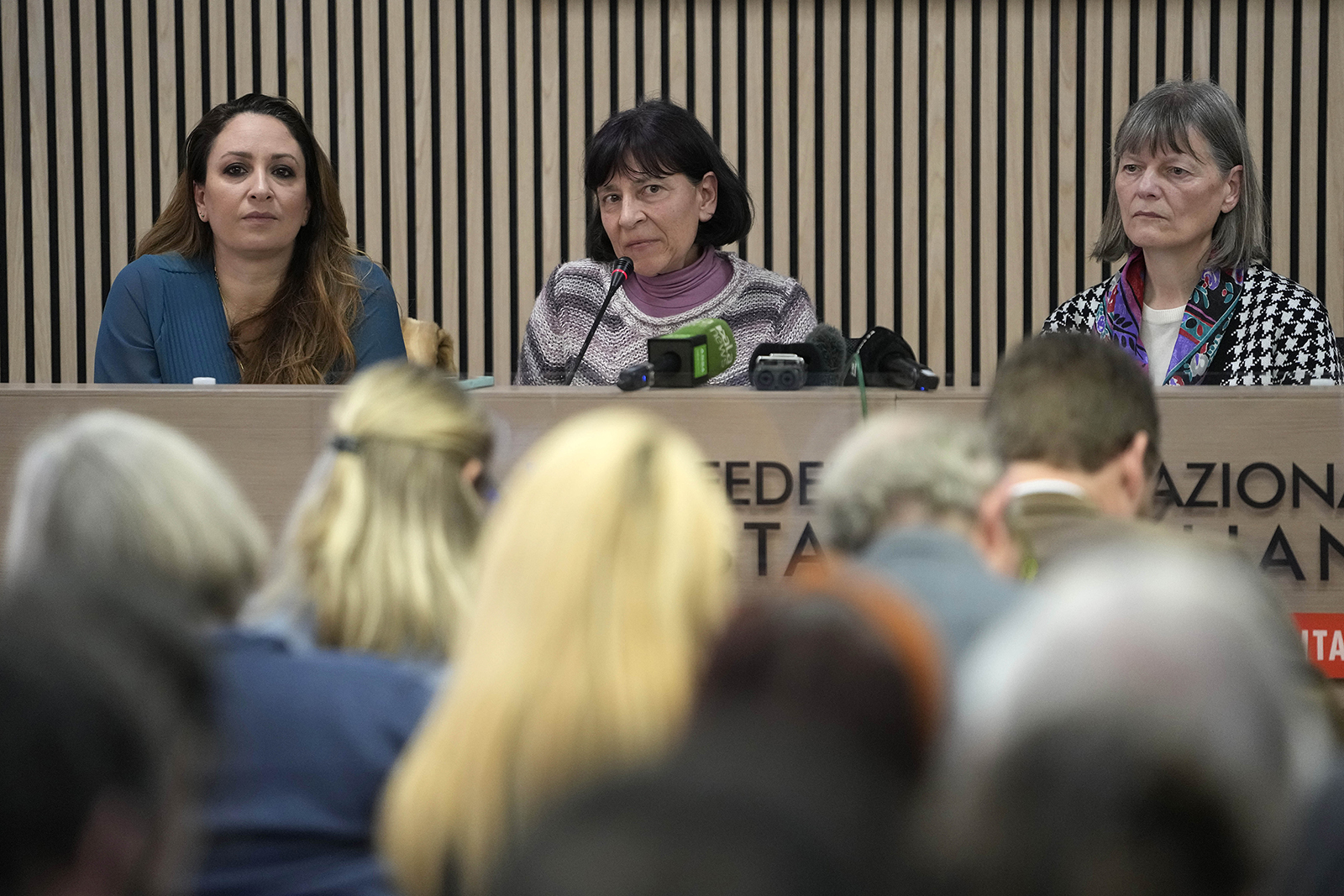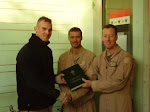The Rev. Marko Rupnik’s mosaics depicting biblical scenes, saints and the Virgin Mary that grace the walls of Luminous Mysteries Chapel are seen covered with paper at St. John Paul II National Shrine, July 23, 2024, in Washington. (AP Photo/Jose Luis Magana)

VATICAN CITY (RNS) — Three women who claim to have suffered abuse at the hands of the Slovenian Jesuit priest Marko Rupnik joined together with their lawyer, Laura Sgrò, to ask the Vatican for justice on Wednesday (March 12), while calling attention to the growing number of religious sisters denouncing abuse in the church.
“We will continue our fight for this. We will continue fighting to make sure their voices are heard,” Sgrò said. “The issue of abuse against religious women must be addressed,” she added.
The appeal was made at the Spazio Sette bookstore in Rome during the presentation of Sgrò’s new book, “Sacred Rapes,” which tells the stories of three nuns, Gloria, Mirjam and Samuelle, as well as other religious sisters who claim sexual, psychological and spiritual abuse within the church.
In her book, Sgrò talks about the first time a nun, whom she calls Maria, walked into the legal office asking for her help after being raped by a priest who then forced her to have an abortion. Maria, she writes, told her that she had been shunned from her religious order after the mother superior was informed of the abuse. Sgrò said she never saw Maria again.
“No one believes them,” she said, “When a nun is raped by a priest, it’s always the nun who seduced him, she is the one who somehow possessed him and who knows what the poor devil had to do to escape her advances.”
Since that day, Sgrò said, she has received hundreds of letters, visits and emails from religious sisters relaying their experiences. When Gloria Branciani walked into her office and told her that she had been sexually and psychologically abused for years by Rupnik, Sgrò believed her.
Branciani claims that Rupnik, an artist of international renown and great influence in the church, abused her after she joined the Loyola community of Mengeš in Slovenia in 1987, which he founded with Sister Ivanka Hosta. Branciani alleges that Rupnik raped her and forced her to have sex with another sister under the guise of replicating the Holy Trinity. Branciani also claimed he abused her while she modeled for his mosaics of the Virgin Mary that currently adorn sanctuaries all over the world.
“I lost my identity,” Branciani said at the event. “I couldn’t feel my feelings anymore.”
She reported Rupnik in 1993 to her mother superior and as a result was forced to leave the order. Rupnik was also forced to leave the community, but no explanation was offered about what had happened.
Slovenian-born Mirjam Kovac, who was also a member of the community and a close friend of Branciani, said that after the accusations the religious order became more controlling of its members. “I was told that Gloria was not the right person to choose as a friend,” she said at the event, adding that the order isolated the sisters form the outside world. “We were manipulated,” she added.
“I felt guilty. I could have taken her defense, and I didn’t,” Kovac, who is a canon lawyer at the Pontifical Gregorian University, said.
Branciani and Kovac have both left the religious order and are no longer nuns. They were the first to come forward to denounce Rupnik and his order.
In 2020, the Vatican department for doctrine excommunicated Rupnik for absolving a woman he had sexual relations with during confession. An excommunication can be lifted in the church if the person repents for their sins, and Rupnik’s excommunication was lifted soon after.
“It OK if you repent. It’s OK if your excommunication is lifted. But you still have to go to prison,” Sgrò said, adding that Rupnik never publicly acknowledged or apologized for the abuse.
Sgrò currently represents five women who claim to have suffered some form of abuse at the hands of Rupnik, but she claims to have proof of at least 15 more. She said one of the victims, who goes by the name of Martha, was among the crowd on Wednesday but would not speak out of fear.
The Jesuit order expelled Rupnik from its ranks in February 2023, but while Pope Francis lifted the statute of limitations on the case, there is no report about the state of the canonical trial.
The question of whether to continue to display his artwork remains controversial. From the sanctuary at Lourdes to the ongoing project at the Aparecida Cathedral in Brazil, consisting of an area of 43,000 square feet, Rupnik’s religious mosaics adorn over 220 sacred sites around the world.
The Vatican has yet to issue a direct statement on how religious sites should handle the already installed mosaics; however, Rupnik’s artwork has remained clearly visible in video recordings of Pope Francis at the Domus Sanctae Marthae at the Vatican, where Francis lives. And the head of the Vatican’s communication department, Paolo Ruffini, said during a press conference in June 2024 that in the past “removing, deleting or destroying art has never been a good choice.”
More: https://religionnews.com/2025/03/13/rupniks-case-casts-light-on-the-sexual-abuse-of-nuns/












No comments:
Post a Comment